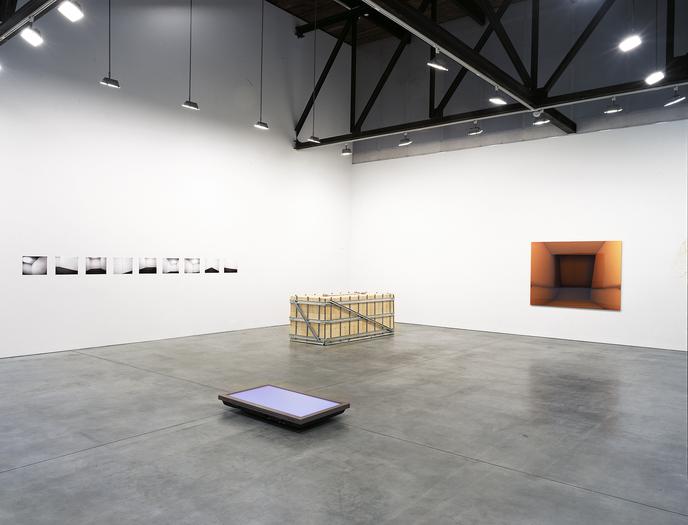Craig Kalpakjian
April 5 – May 4, 2002
Main Gallery
As someone said to me - I can't remember now who it was - it is really remarkable that when you wake up in the morning you nearly always find everything in exactly the same place as the evening before. For when asleep and dreaming you are, apparently at least, in an essentially different state from that of wakefulness; and therefore, as that man truly said, it requires enormous presence of mind or rather quickness of wit, when opening your eyes to seize hold as it were of everything in the room at exactly the same place where you had let it go on the previous evening. That was why, he said, the moment of waking up was the riskiest moment of the day. Once that was well over with without deflecting you from your orbit, you could take heart of grace for the rest of the day.
- Franz Kafka
Andrea Rosen Gallery is delighted to announce our first solo exhibition by Craig Kalpakjian, an artist the gallery has championed and exhibited since 1995. Now officially represented by the gallery Kalpakjian will debut a new series of large-scale photographic prints of his digitally rendered architectural interiors. Like the hermetically beautiful and meticulous photographs Kalpakjian exhibited in 1998 and 2000 at Robert Miller Gallery these new digital renderings continue to feed upon the psychological tensions and subtle surface variations of un-peopled rooms, foreboding corridors and rogue architectural details.
Representing a return to a territory the artist explored in the early to mid 1990's, Kalpakjian will also show two new sculptural works. One, a windowless and door-less enclosure, will contain a robotic dog marketed by the SONY Corp. under the name AIBO (renamed WEEGEE by the artist). Alongside his own photographs, Kalpakjian will exhibit pictures taken by WEEGEE of the inside of its imposing and un-seeable home. (SONY outfits its virtual pets with the ability to photograph their environment upon command and Kalpakjian will exploit this feature to literally turn the sculpture into a machine for making images.) The interior of this Black Box, as the piece is called, will become literally a covert recording device, producing images that echo the computer void (and artist's mind) from which Kalpakjian's own photographic images are conjured. The subtle similarities and differences between AIBO's crude photos of real space and Kalpakjian's luscious fictional interiors underscore the powerful cerebral rift between imagination and reality.
Also present will be a video plasma screen sculpture playing a DVD video of a floor entitled Shoegazer. A moving image hovering in a space between reality and irrationality placed on the gallery floor itself. Like Kalpakjian's 1995 Corridor video (a continuous projection of a sterile curving hallway) the hypnotic and endless real time of this moving image reflects the earlier intent of works like Run, 1990; Departure; 1990, and Line, 1993; hybrids between sculpture, video and installation, intended to engage and control the way we move around, experience and interact with a space. As in Kalpakjian's photographs, Shoegazer melds mind space and perception to interrupt our assumptions of what is reality.
